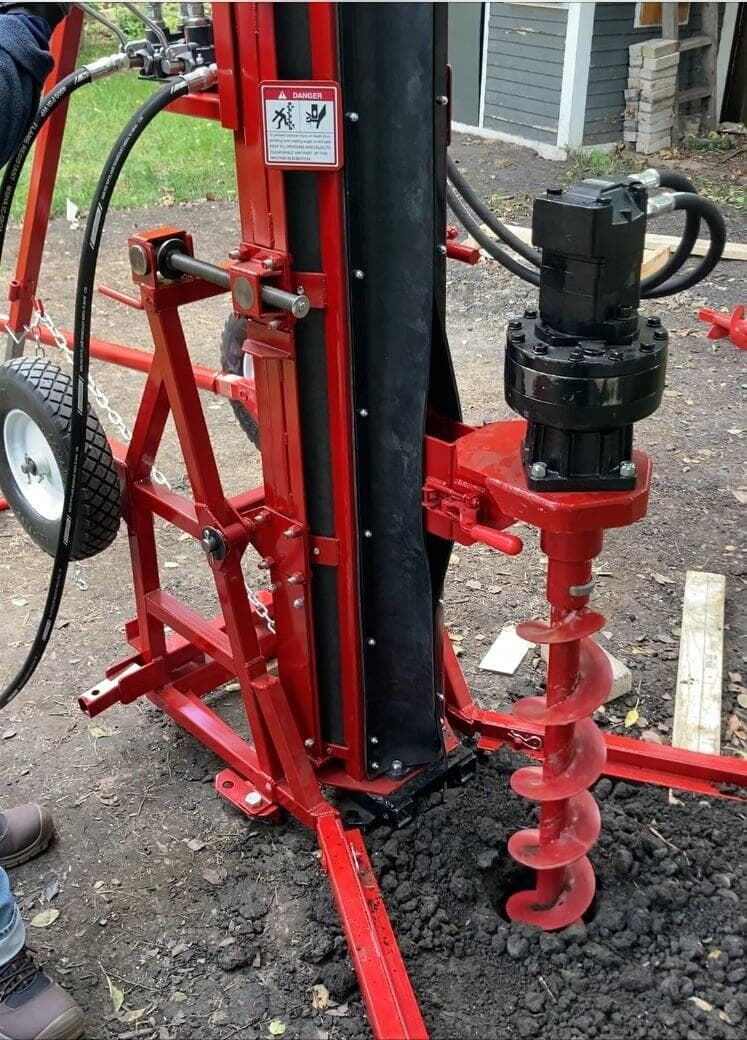Why Use Geothermal Energy
Fight climate change with all electric heat that is up to 5x more efficient than electric resistance heating
Improve your indoor air quality by eliminating combustion from natural gas furnace
Take power away from despots - natural gas fuels wars. When you stop using it you take away the funding for conflict
Energy independence for America. Use locally produced electricity to heat and cool your home.
Save money - geothermal is the cheapest form of heat and ties your future bills to the steady price of electricity, not the gyrations of natural gas pricing that can fluctuate 50-100% per year.
Residential geothermal heating and cooling systems offer several advantages over traditional HVAC systems:
Energy Efficiency: Geothermal systems are highly energy-efficient, as they use the constant temperature of the earth as a heat source or sink. According to the US Department of Energy, geothermal systems can reduce energy consumption by 25-50% compared to traditional HVAC systems.
Lower Operating Costs: Geothermal systems have lower operating costs than traditional HVAC systems, as they require less energy to heat and cool your home. While the initial installation cost may be higher, the savings in energy costs over time can make up for the investment.
Durability: Geothermal systems are durable and require less maintenance than traditional HVAC systems. The underground piping system typically lasts for 50 years, while the indoor components can last for 25 years or more.
Environmentally Friendly: Geothermal systems have a much smaller environmental footprint than traditional HVAC systems. They don't use fossil fuels, emit greenhouse gases or require a lot of electricity to operate, making them a greener and more sustainable option.
Comfort: Geothermal systems provide consistent and comfortable heating and cooling throughout the year, as they don't rely on fluctuating outdoor temperatures to heat or cool your home. They also operate more quietly than traditional HVAC systems, which can improve your overall comfort and reduce noise pollution in your home.
Probably yes! Here is the ideal geothermal system for Earth Power:
Our ideal home currently uses natural gas and has existing full size duct work. It might or might not have an existing A/C unit.
You have a backyard of at least 20' by 20' and an access gate at least 32" wide.
We also work on projects that are full or partial gut/rehab.
There are a variety of Federal and local incentives available to offset the costs of a new geothermal system. They include:
Federal 30% Tax Credit
Comed Rebates of up to $6,000 per home
Geothermal Renewable Energy Credits (GRECs)
Like Air Source Heat Pumps, Geothermal systems deliver heat at a lower and more consistent level compared to natural gas forced air. They both also do not involve combustion so create better indoor air quality and less dry air in the winter. However, geothermal is generally about twice as efficient as an Air Source Heat Pump since it derives most of its energy from the earth in summer and winter. This means that your electricity bills will be significantly less with geothermal. This is most noticeable at higher temps in the summer (over 90) and lower temps in the winter (under 20) when geothermal efficiency is far higher than Air Source. Because of this, geothermal produces much less stress on the electric grid (particularly at peak times) and emits far less Carbon Dioxide into the atmosphere. Finally, geothermal heat pumps tend to last 20-25 years as opposed to air source at 10-15 years before replacement. Most geothermal loop fields are expected to last 50-100 years.
Not unless you move to Iceland! There are two primary types of geothermal energy: geothermal (or Ground-source) heat pumps (GHPs) and geothermal power plants. While both harness heat from the Earth's interior, they differ in their applications and efficiency for heating homes.
GHPs utilize the relatively constant temperature of the Earth's subsurface to provide heating and cooling for buildings. GHPs work by circulating a fluid, typically a mixture of water and antifreeze, through a series of pipes buried underground or submerged in a nearby body of water. This fluid absorbs heat from the ground during winter and transfers it indoors, while in the summer, it extracts heat from the building and dissipates it into the ground.
GHPs are highly efficient for heating homes because the Earth's subsurface maintains a relatively stable temperature throughout the year. In colder climates, the ground temperature is warmer than the ambient air temperature during winter, making it easier to extract heat. GHPs can achieve high heating efficiencies, commonly referred to as Coefficient of Performance (COP), ranging from 3 to 5. This means that for every unit of electricity used to operate the system, three to five units of heat energy are produced, resulting in significant energy savings compared to conventional heating systems. Or put another way, heating with a GHP can cost 80% less than heating with electric resistance heat.
Geothermal Power Plants generate electricity by utilizing the natural heat energy stored within the Earth's crust. These power plants tap into geothermal reservoirs (think "Old Faithful" in Yellowstone), typically found in volcanic or tectonically active areas, where hot water or steam is trapped beneath the surface. By drilling deep wells, the hot fluids are brought to the surface, where their energy is converted into electricity using steam turbines and generators.
While geothermal power plants are highly effective for generating electricity, they are not suitable for directly heating homes. The main reason is that the temperatures of the geothermal reservoirs used for power generation are much higher than what is required for residential heating (do you really want a geyser coming into your basement?). Power plants need to tap into geothermal resources with temperatures of at least 300°F (150°C) to efficiently produce electricity. However, these high temperatures are not necessary or practical for residential heating, where temperatures around 100-120°F (38-49°C) are typically sufficient.
So if you want to heat your home in Chicago cleanly and efficiently, forget about the geysers in Iceland and instead, install an Earthpower GHP.


